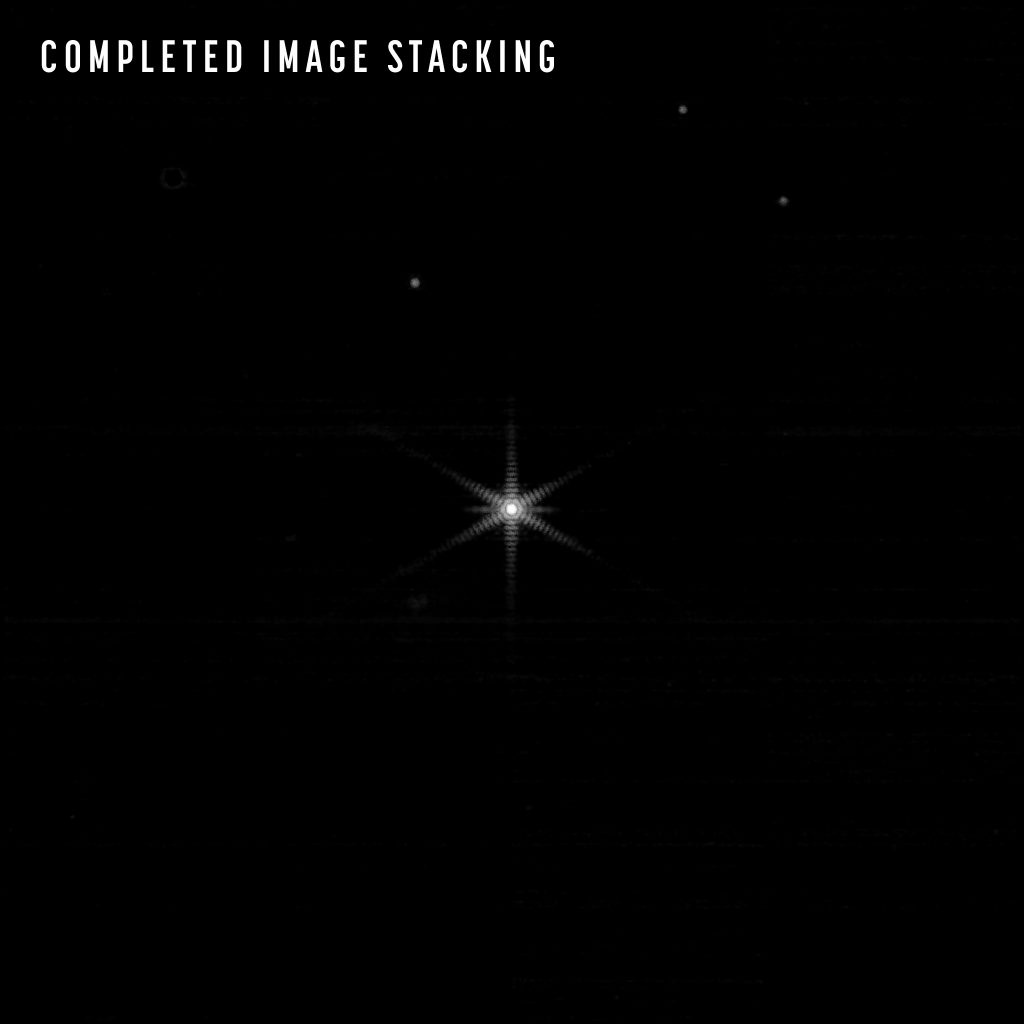It’s coming together! Engineers for the James Webb Space Telescope have now completed two more phases of the seven-step, three-month-long mirror alignment process. This week, the team made more adjustments to the mirror segments along with updating the alignment of its secondary mirror. These refinements allowed for all 18 mirror segments to work together — for the first time — to produce one unified image.
As you can see in the image above, this view of the a star shows one image instead of the 18 views – one from each segment – that we saw earlier this week. NASA engineers say that after future alignment steps, the image will be even sharper.
“We still have work to do, but we are increasingly pleased with the results we’re seeing,” said Lee Feinberg, optical telescope element manager for Webb, in a blog post. “Years of planning and testing are paying dividends, and the team could not be more excited to see what the next few weeks and months bring.”
The star in this image is different from the one that was used earlier (HD 84406).
“We need fainter stars for later steps,” said Marshall Perrin, deputy project scientist for JWST, on Twitter. “We’ve used a bunch of different stars so far and will use many more. This one happens to be 2MASS J05042687-5438018, a K=8.8 mag star.”
Perrin added that the snowflake pattern in the single image is diffraction from the hexagonal shape of each segment.
“This pattern’s going to be a signature of JWST images, instead of the plus-shaped diffraction spikes Hubble and many other telescopes have,” Perrin added. “As we continue to phase the mirrors, and the central peak gets five time sharper and 25 times brighter, the diffraction spikes will narrow and get fainter. … After a decade plus of simulating these [images], it’s a delight to see them for real!”
JWST’s Near Infrared Camera (NIRCam) instrument took the images of this star, which are being used to align the mirrors and calibrate the telescope.
The two steps that were taken this week are called Segment Alignment and Image Stacking. Segment Alignment corrects most of the large positioning errors for the segments. A process called Phase Retrieval uses mathematical analysis to determine the precise positioning errors of the segments. At this phase, the segments still don’t work together as a single mirror.

This animated gif shows the “before” and “after” images from Segment Alignment, when the team corrected large positioning errors of its primary mirror segments and updated the alignment of the secondary mirror.
In Image Stacking, the images from each segment image are stacked on top of one another. Then the individual segment images are moved so that they fall precisely at the center of the field of view to produce one unified image. This puts all the light in one place on the detector.
“We still have to ensure the light arrives at the detector in perfect unison, which will make the resolution 5 times better than what you see here,” said JWST project scientist Klaus Pontoppidan on Twitter.
Next, the team will now begin making even smaller adjustments to the positions of Webb’s mirrors.
Although Image Stacking put all the light from a star in one place on NIRCam’s detector, the mirror segments are still acting as 18 small telescopes rather than one big one. The segments now need to be lined up to each other with an accuracy smaller than the wavelength of the light.

The team is now working on that, beginning the fourth phase of mirror alignment, called Coarse Phasing, where NIRCam is used to capture light spectra from 20 separate pairings of mirror segments. This helps the team identify and correct vertical displacement between the mirror segments, or small differences in their heights. This will make the single dot of starlight progressively sharper and more focused in the coming weeks.
But from here on, the process will be iterative, where once a certain level of alignment and focus is achieved, the engineers may have to go back and re-do certain steps to achieve perfect alignment.
“You align the mirrors, then check them, and then you need to go back a few steps and adjust and recenter, and then go back through the entire process again,” Feinberg told me last month, “which is why the process will take approximately three months.”
Team members continue to share their experiences and provide more info on the alignment process at the JWST blog.

